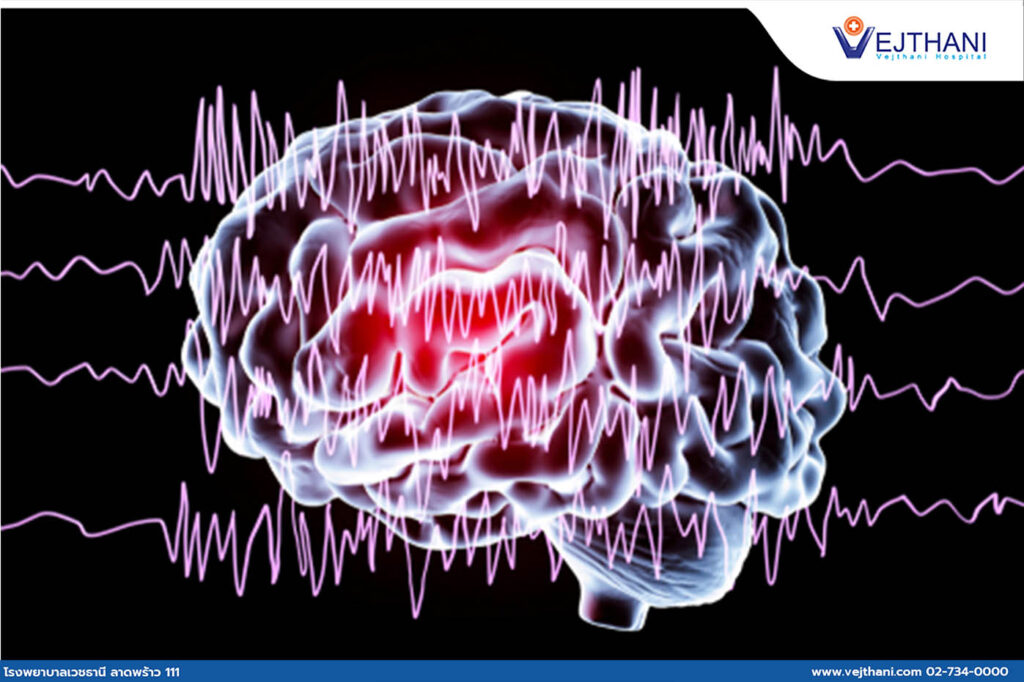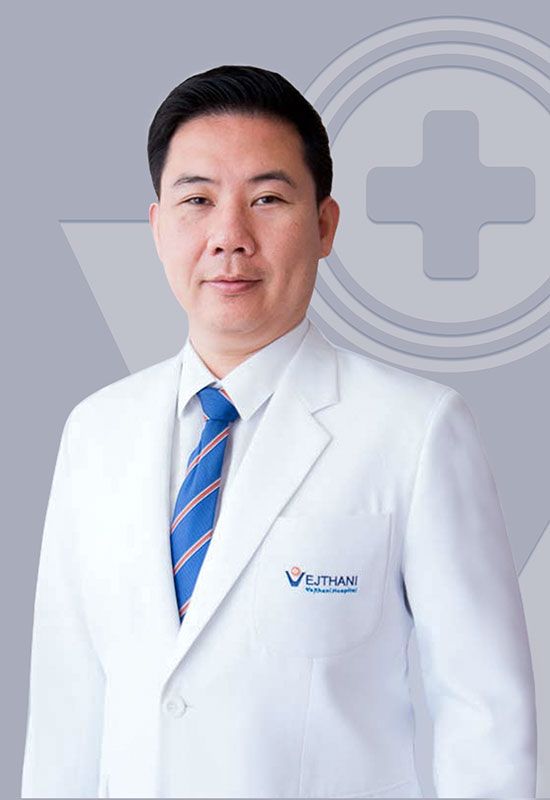Mild Cognitive Impairment (MCI) and Early-Stage Alzheimer’s: Diagnosis and Treatment Options
Learn about Mild Cognitive Impairment (MCI) and early Alzheimer’s. Discover diagnosis and IV infusion therapy that may slow disease progression.

Symptoms of epilepsy can strike unexpectedly during activities such as driving, swimming, or performing essential tasks, posing a danger to the person. Currently, there have been significant advancements in epilepsy medications. Adjustments to these medications have led to successful treatment outcomes, with 60-70 percent of epilepsy patients achieving remission.
Dr. Chusak Limotai, a neurologist specializing in epilepsy at Vejthani Hospital, explained that epilepsy occurs from abnormal excessive electrical activity inside the brain. There are two types of epilepsy: Focal Epilepsy occurs when seizures start in one specific area of the brain, while Generalized Epilepsy occurs when seizures begin in both sides of the brain and rapidly spread to the entire brain. The causes of epilepsy vary by age group. Genetics, congenital brain abnormalities, or brain infections, and high fevers may cause epilepsy in children. The most common causes in adults include brain injuries or brain tumors. In older adults, epilepsy is often caused by stroke. However, the exact driving factor of epilepsy is unknown in about two-thirds of patients.
Epilepsy patients can experience seizures without a stimulating factor, while some may have seizures triggered by factors like sleep deprivation or stress.
Frequent seizures, especially in children, can lead to developmental delays. In adults, the long-term effects of frequent seizures on brain cells are unclear. However, within 5 minutes to 1 hour after a seizure, adults may experience temporary confusion and slow performance and thinking.
To diagnose epilepsy, the doctor will take a detailed medical history from the patient, their family members, and any witnesses present during the seizures. The patient can inform the doctor about pre-seizure symptoms, such as abdominal distension, palpitations, dizziness, seeing strange lights, or ringing in the ears. Witnesses play a crucial role in describing the nature of the symptoms observed when the patient is unaware. This information can be used to determine which part of the brain is affected by seizures. In addition, an electroencephalogram (EEG) can be used to confirm the diagnosis of epilepsy and to distinguish between different types of seizures. This could help select the most appropriate medication for treatment.
Up to 60-70% of epilepsy cases can be cured by preventing seizures with anti-seizure or anticonvulsant drugs. Therefore, treatment primarily initiates with these medications. However, for patients with focal epilepsy who do not respond to medication, doctors may investigate further to identify the source of seizures to plan surgery. In addition to anticonvulsant drugs, people with focal and generalized epilepsy may be treated with deep brain stimulation (DBS) or vagus nerve stimulation (VNS). DBS and VNS are devices implanted in the body to deliver electrical impulses to the brain to control seizures. These impulses can help to reduce seizure frequency and severity. Additionally, for those who can adhere to dietary guidelines, the Ketogenic Diet may be beneficial to mitigate seizures.
Nevertheless, epilepsy prevention focuses on addressing the source of seizures. For instance, taking measures to prevent frequent high fevers in children. In adults, take precautions to avoid accidents that could impact the brain. In older adults, prevention of cerebrovascular disease or stroke is also important.
“Most seizures stop within 1-2 minutes. If you see someone having a seizure, gently place them on their side to prevent choking and, importantly, do not put anything in the patient’s mouth as this will cause danger to both the patient and the first aider.”

Neurology
Medical Neurology - Epilepsy